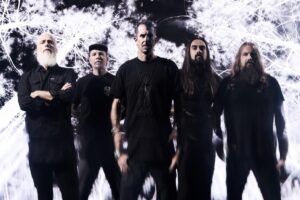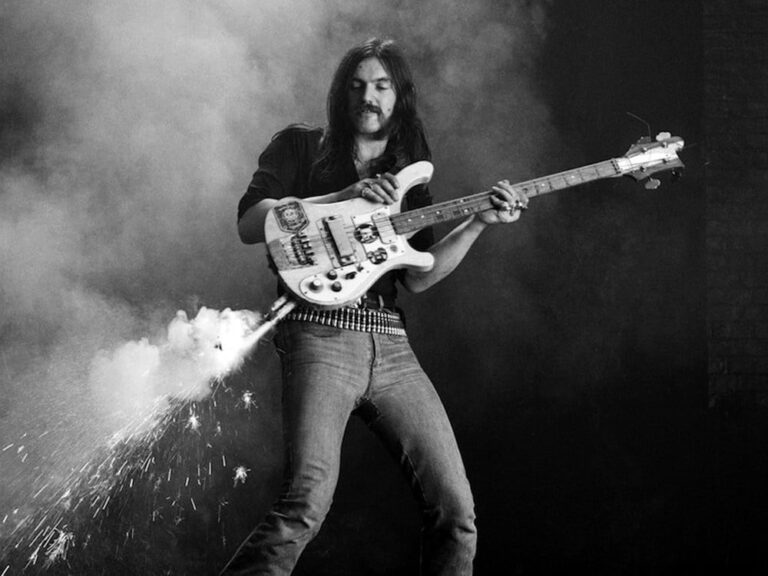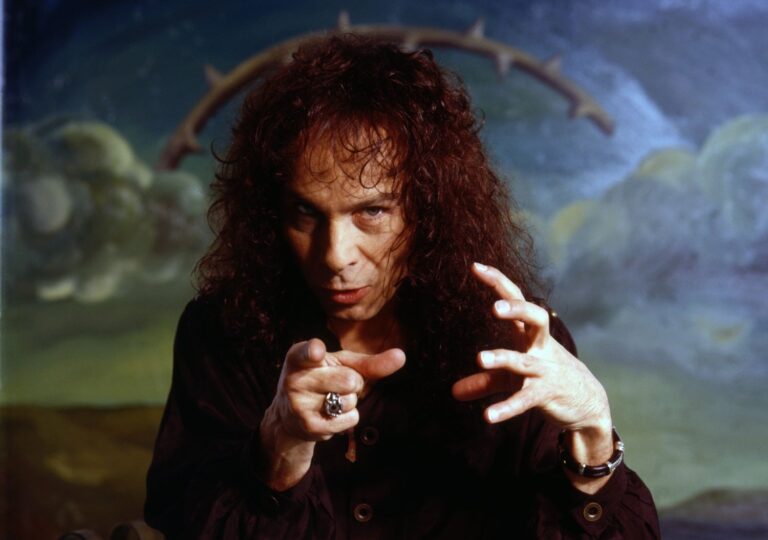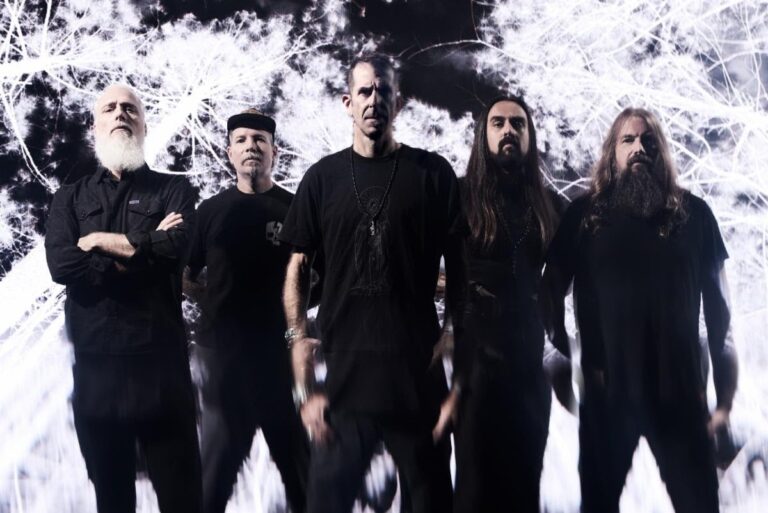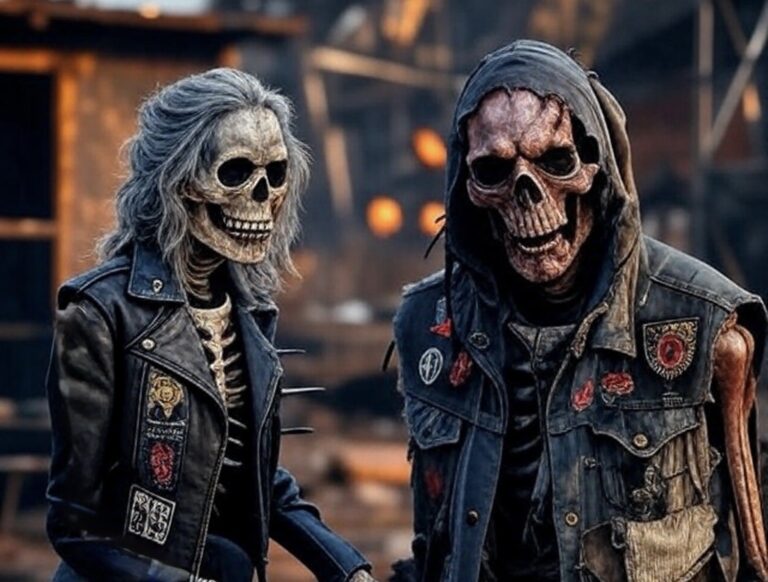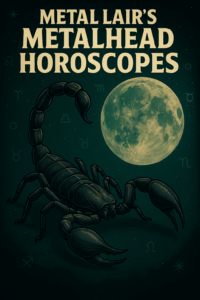Written By Derek Gann
King Diamond
Few figures in heavy metal loom as large and as theatrically intense as King Diamond (born Kim Bendix Petersen, June 14 1956, Copenhagen).
His career spans several decades, and his influence ripples through myriad sub-genres of metal, from classic heavy metal and thrash to black metal and horror-themed metal.
What follows is a deep dive into his life, his music, his impact, and a curated playlist of his essential tracks.
Origins & Early Career
Kim Bendix Petersen grew up in Hvidovre near Copenhagen. In the early 1970s he played guitar in a cover band named Brainstorm (from around 1973) before shifting to vocals and forming Black Rose.
His fascination with theatrical performance was sparked by watching Alice Cooper live, and it wasn’t long before he adopted the corpse-paint, horror imagery, and over‐the‐top staging that would become his trademark.
Breakthrough: Mercyful Fate (1981-84)
In 1981 King Diamond joined forces with guitarist Hank Shermann (and others) to form Mercyful Fate. With albums like Melissa and Don’t Break the Oath (1984)
They created a dark, occult-tinged metal that fused shrieking falsetto vocals, occult and horror-themed lyrics, and guitar work that would influence many later extreme metal bands.
The black & white face-paint, the inverted crosses, the theatrical stage presence: all of these became part of what many later black-metal and extreme metal bands drew from.
As one retrospective put it: “King Diamond’s painted face … launched a thousand ships in the black metal scene.”
Solo Career: The Rise of King Diamond (1985 onward)
In 1985, King Diamond embarked on his solo career under his own name, forming a band with Michael Denner and Timi Hansen among others.
His solo work was notable for its concept albums: elaborate horror/occult narratives woven across full albums.
For example, Abigail (1987) tells the ghost‐story of a haunted mansion and the spirit of a stillborn child. It’s not just music; it’s theatrical storytelling.
His vocal range, especially his use of falsetto and his chilling countertenor register set him apart.
Throughout the late ’80s, ’90s and into the 2000s he continued making albums (for example The Eye, House of God, Give Me Your Soul…Please) that kept his vision intact.
Key Elements of His Style & Themes
Vocal Style
King Diamond’s voice is distinctive: he uses a wide vocal range, sharp falsetto sweeps, dramatic phrasing, and theatrical delivery.
Theatrical & Visual Imagery
His stage persona, corpse-paint, elaborate costumes, horror props and narrative visuals made his shows more than concerts; they were performances.
A feature described how he avoided electric lighting in his home because “it drives away the spirits.”
Conceptual & Narrative Albums
Rather than just a collection of songs, many of his albums tell full stories: haunted houses, witchcraft, ghosts, betrayals, evil children and cult horror.
These narrative arcs elevated his work into something of a horror-metal cinema.
Influence of the Occult & Horror
While the “Satanic” imagery sometimes attracted controversy, King Diamond has clarified that his interest was philosophical rather than purely promotional shock value. The seriousness with which he treated the themes gave his work heavy cred.
King Diamond’s influence is broad and deep:
Influence & Legacy
Bands in the Scandinavian black-metal scene cite Mercyful Fate and King Diamond’s visual/lyrical aesthetic as major influences.
Major metal acts like Metallica have cited King Diamond and Mercyful Fate as inspirations; they even performed medleys in his honour.
His theatrical style helped broaden what heavy metal could be beyond riff after riff, into immersive storytelling experiences.
His voice and style influenced power metal, extreme metal, and even the theatrical heavy-metal revival movements.
In sum: King Diamond is both a pioneer and a touchstone. Someone who changed the visual, lyrical and musical landscape of heavy metal.

Career Milestones & Highlights
1956: Born Kim Bendix Petersen in Copenhagen, Denmark.
Early 1970s: Plays in Brainstorm and Black Rose.
1981: Mercyful Fate forms; early albums establish occult metal credentials.
1984: Don’t Break the Oath by Mercyful Fate released and often cited as one of the foundational albums of extreme metal.
1986: King Diamond solo debut Fatal Portrait.
1987: Abigail released, iconic narrative album.
1990s: onward: Continues solo work, concept albums, live shows, maintaining cult legacy.
2010s: Still active, touring, maintaining the theatrical show.
A Curated Playlist: King Diamond’s Best Songs
Here’s a playlist that spans King Diamond’s career. A roadmap of his evolution, from early horror metal to narrative masterworks.
1. “Welcome Princess of Hell” – Mercyful Fate (from Don’t Break the Oath, 1984)
A blistering track from his early era, combining occult lyrics and swirling guitars.
2. “Come to the Sabbath” – Mercyful Fate (from Melissa, 1983)
Dark and dramatic. One of the key songs that cemented his reputation.
3. “The Family Ghost” – King Diamond (from Abigail, 1987)
A haunting narrative track with high drama; part of the iconic Abigail concept.
4. “Abigail” – King Diamond (from Abigail, 1987)
Title track of his breakthrough solo album; theatrical, melodic, intense.
5. “Them” – King Diamond (from Them, 1988)
A more emotionally charged, haunted story; great example of his conceptual ambition.
6. “Eye Of The Witch” – King Diamond (from The Eye, 1990)
A twisted story set around witchcraft and history; shows his narrative reach.
7. “Sleepless Nights” – King Diamond (from The Best of King Diamond, 2003)
A Deep Cut that highlights his vocal and storytelling breadth.
8. “Give Me Your Soul…Please” – King Diamond (from Give Me Your Soul…Please, 2007)
Later career, still full of narrative depth and theatrical delivery.
9. “Masquerade of Madness” – King Diamond (also live staple)
A fan-favorite live number; visceral, memorable.
10. “No Presents for Christmas” – King Diamond (from Fatal Portrait, 1986)
Seasonal in title only. Sharp, cold, and shows his early solo voice.
Conclusion
King Diamond is not just another metal frontrunner, he is a visionary. His blend of savage riffs, soaring vocals, horror storytelling, and visual spectacle set a template that many still follow.
He bridged the classic heavy metal era with the extreme metal underground; he made his stage a theatre of the macabre; he made his albums into tales to be lived, not just listened to.
For anyone interested in the darker side of metal, the theatrical side, the narrative side, the side where horror, myth, voice and spectacle combine, King Diamond is essential.
Dig deeper into Derek’s Metal Legacy vault:
Ronnie James Dio – The Last Great Voice of Metal
Lemmy Kilmister and Motörhead: The Unstoppable Force Behind Heavy Metal’s Grit and Glory

